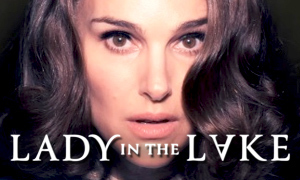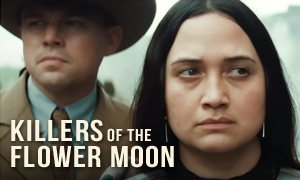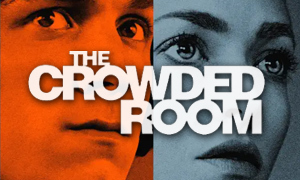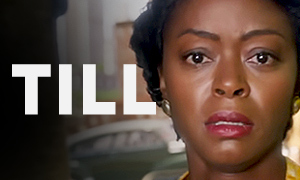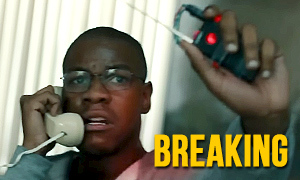Killers of the Flower Moon vs. the True Story of the Osage Murders
Leonardo DiCaprio
Born: November 11, 1974
Birthplace:
Hollywood, Los Angeles, California, USA
Ernest Burkhart
Born: September 11, 1892
Birthplace: Greenville, Texas, USA
Death: December 1, 1986, Cleveland, Oklahoma, USA
Bio: William Hale's Nephew who was Encouraged by Hale to Marry Mollie Kyle
Lily Gladstone
Born: August 2, 1986
Birthplace:
Browning, Montana, USA
Mollie Burkhart
Born: 1886
Death: June 16, 1937
Bio: Wife of Ernest Burkhart and the Heir to her Family's Mineral Headrights
Robert De Niro
Born: August 17, 1943
Birthplace:
New York City, New York, USA
William Hale
Born: December 24, 1874
Birthplace: Hunt County, Texas, USA
Death: August 15, 1962, Phoenix, Arizona, USA
Bio: A Wealthy Rancher and Political Boss in Osage County who was One of the Main Figures Behind the Osage Indian Murders
Jesse Plemons
Born: April 2, 1988
Birthplace:
Dallas, Texas, USA
Tom White
Born: March 6, 1881
Birthplace: Oak Hill, Texas, USA
Death: December 21, 1971, El Paso, Texas, USA
Bio: Bureau of Investigation Special Agent who Solved the Osage Murders
Tantoo Cardinal
Born: July 20, 1950
Birthplace:
Fort McMurray, Alberta, Canada
Lizzie Q. Kyle
Born: August 1848
Death: July 17, 1921 (suspected poisoning)
Bio: Mother of Anna, Mollie, Minnie and Reta | Photo: Osage Nation Museum
Had the Osage been driven from their lands onto the Oklahoma reservation?
Yes. In researching the real history behind Killers of the Flower Moon, we learned that the Osage Tribe had originated in the Ohio and Mississippi river valleys around 700 BC before migrating west after the 17th century, settling not far from the confluence of the Mississippi and Missouri rivers. In the early 1800s, they were pressured to give up their claims to ancestral lands and were persuaded to relocate farther west to present-day Kansas and Oklahoma.
After Missouri became a state, they urged the U.S. government to remove all remaining Native Americans residing within their borders. Many Osage families made their way to a reservation in Kansas. According to the Jackson County Historical Society, others were forcibly removed from the state in 1837 in the Osage War, whereby Missouri state militia engaged in violent confrontations with hunting parties of the Osage, Shawnee, and Delaware, driving them out of the state.
In the early 1870s, the Osage were forced from their reservation in Kansas and pushed onto a seemingly worthless reservation in what at the time was Indian Territory and what is today Pawhuska, Oklahoma. The Osage legally purchased the reservation land from the Cherokee Nation, which made it harder for the U.S. government to try to carve it up later and give it to white settlers. What the Osage didn't know was that beneath the reservation were oil deposits that would be discovered in 1894 and bring them immense wealth. -Atlas Obscura
After oil was discovered on their reservation, did the members of the Osage Nation become the richest people per capita in the world?
Yes. A Killers of the Flower Moon fact-check reveals that following the discovery of oil on the Osage reservation, the people of the Native American tribe eventually became very wealthy. 2,229 mineral headrights were allotted, one to each Osage who enrolled. The increasingly valuable oil headrights would become the focal point of the Osage Indian murders. How valuable were the Osage headrights? NPR notes that in 1923 for example, members of the Osage Nation collectively received over $30 million, which is the equivalent of more than $400 million today.
Prospectors paid them for leases and royalties to extract the oil from beneath their land. Oilmen were so desperate for leases that regular auctions were held for them beginning in 1912 under a tree dubbed the "Million Dollar Elm." The expanding wealth of the Osage caught the attention of many people who wanted to exploit them, including rancher William King Hale, portrayed by Robert De Niro in the movie.
Did Ernest Burkhart meet Mollie Kyle when he chauffered her?
Yes. In addition to carrying out tasks for his uncle, William Hale, Ernest, a World War I veteran, made a living as a chauffeur. It's true that he first met Mollie when he gave her a ride.
Why did the Osage murders happen?
William King Hale, portrayed by Robert De Niro, came to the Indian Territory from Texas in the late 1800s and settled on the Osage Indian Reservation, building the successful Hale Ranch. He gained wealth through cattle ranching, unfair trade with the Osage Nation, and eventually a murderous scheme to gain control of the oil headrights that belonged to certain members of the Osage community, namely the Kyle Family and their relatives.
Like in the Martin Scorsese movie, Hale, who proclaimed himself "King of the Osage Hills," carried out his deadly plan by encouraging his subservient nephew, Ernest Burkhart, to marry Mollie Kyle, whose family owned a significant number of headrights. Hale then began to orchestrate the murders of Mollie's family members, including her sisters, mother, and several extended family members, in hopes that all of their individual headrights would end up belonging to the now-married Ernest and Mollie Burkhart. The murders were dubbed the "Reign of Terror" by the press.
One glaring difference between the movie and real life when it comes to the character of William Hale is that Robert De Niro is more than 30 years older than the real William Hale was at the time of the events depicted in the Killers of the Flower Moon movie.
Did William Hale paddle Ernest Burkhart?
No. After botching an assassination plan, William Hale takes his nephew Ernest into a room and spanks him with a large wooden paddle, striking him repeatedly. In answering, "Is Killers of the Flower Moon accurate?" we discovered that this scene is fictional and does not appear in David Grann's book. The movie uses it as a way to emphasize Ernest's submissive and subservient nature with regard to his uncle. On an interesting side note, Entertainment Weekly reported that Robert De Niro was really paddling Leonardo DiCaprio, who had "some padding on his butt."
How many people were killed in the Osage Indian murders?
Dubbed the "Reign of Terror" by the newspapers, the majority of the murders lasted from 1921 to 1926. While exploring the Killers of the Flower Moon fact vs. fiction, we learned that by 1923, the Osage murder victims totaled more than two dozen people. It was at that point that the Bureau of Investigation (later the Federal Bureau of Investigation) began to investigate its first major murder case, sending former Texas Ranger Tom White, an agent out of the Bureau's Houston branch, to the Osage Indian Reservation. White is portrayed by Jesse Plemons in the movie. He put together a team of undercover agents with various fake identities, including an insurance salesman and a cattleman. An agent who was an American Indian also went undercover as part of the team.
While several of the Osage victims who were part of the Kyle Family are featured in the Killers of the Flower Moon cast vs. real people section at the top of the page, more informative descriptions of their murders are listed below. Like in the movie, Mollie Burkhart's family was William Hale's prime target. It's important to note that this is far from a complete list of Osage murder victims, as Hale was far from the only perpetrator against the Osage. However, it does include many of the victims focused on in the Martin Scorsese movie.
- Minnie Smith: Mollie's younger sister Minnie was the wife of W.E. Smith. She died on September 22, 1918. Similar to her mother, Lizzie Q. Kyle, who died three years later, Minnie's cause of death was listed as a "peculiar wasting disease." It's most likely that, like her mother, she too had been poisoned.
- Anna Brown: The older sister of Mollie Burkhart, Anna's decomposing body was found on May 27, 1921 in a remote ravine in Osage County. Because they could not find a killer, local law enforcement ruled the 36-year-old's death accidental due to alcohol poisoning. Since she was divorced, her mineral headrights went to her mother, Lizzie Q. Kyle. Eventually, petty criminal Kelsie Morrison admitted to murdering Anna with the help of William Hale's other nephew, Bryan Burkhart, Anna's ex-boyfriend and the brother of Ernest Burkhart (Bryan is sometimes referred to as Byron, his birth name, but he went by Bryan). They met her at her sister Mollie's home and took a heavily inebriated Anna to Three Mile Creek, the location where Morrison shot and killed her. Morrison testified that William Hale asked him to murder Anna Brown.
While the movie does mention that Anna Brown was pregnant at the time of her murder, it leaves out a highly disturbing element of her death. According to the book, individuals close to Anna said that she had been having an affair with William Hale and that he was the father of her baby. The book notes, "If true, it meant that Hale had killed his own unborn child."
- Charlie Whitehorn: The cousin of Mollie and Anna, Charlie's body was discovered on the same day as Anna's, May 27, 1921, near Pawhuska. The Killers of the Flower Moon true story confirms that he had been shot to death.
- Lizzie Q. Kyle: She was living with her daughter Mollie and son-in-law Ernest Burkhart in Fairfax at the time of her death in July 1921. She is suspected to have been poisoned. Just two months prior, she had inherited the headrights of her daughter Anna Brown, who had been shot to death. Lizzie also possessed the headrights of her deceased first husband and her daughter Minnie, who was also likely poisoned. Doctors said that Lizzie and Minnie died from "peculiar wasting illnesses."
- Barney McBride: He was a wealthy oilman who had aligned himself with the Osage and they trusted him. Since local law enforcement was corrupt and of no use to the Osage (the sheriff reportedly ran a brothel out of his jail), McBride traveled to Washington D.C. in August 1922 to urge the federal government to investigate the murders of the Osage in Oklahoma. After exiting a club where he had been playing billiards, someone placed a burlap sack over his head, tied it, and stabbed him more than 20 times. His murder garnered national attention.
- Henry Roan: He was a cousin of Mollie and Anna. A Killers of the Flower Moon fact-check confirms that Henry was discovered dead in his car on the Osage Reservation on February 6, 1923 after having been shot in the back of the head. Investigators learned that Roan had been acquainted with William King Hale and had once borrowed $1,200 from the cattle rancher. Hale had also fraudulently made himself the beneficiary of Henry Roan's $25,000 life insurance policy. During Ernest Burkhart's interrogation, he implicated a local farmer/cowboy named John Ramsey in the death of Henry Roan. Ramsey admitted that William Hale hired him to kill Henry Roan.
- Rita Smith: On March 10, 1923, a bomb made from 5 gallons of nitroglycerin destroyed the Fairfax home of Mollie and Anna's sister, Rita Smith. In addition to Rita perishing in the blast, her white servant, Nettie Brookshire, also died. Rita's husband, Bill Smith, was badly wounded and succumbed to his injuries four days later. During their investigation, Special Agent Tom White and his team discovered that William Hale had paid several people to make and detonate the bomb. His nephew, Ernest Burkhart, had helped set up the explosion that killed his own sister-in-law. Grann's book mentions that a relative of Ernest's recalled that Ernest's wife Mollie and their kids were supposed to be inside the home that night as well, but Mollie decided against going at the last minute because one of the children was sick. Therefore, if true, it's possible that Ernest had planned to kill his wife and kids in the blast too.
- George Bigheart: William Hale and his nephew loaded George Bigheart onto a train bound for Oklahoma City so that Bigheart could go to the hospital. Doctors suspected he'd drunk poisoned whiskey. Gravely ill, Bigheart phoned attorney William "W.W." Watkins Vaughan in Pawhuska and requested he come to the hospital. He told Watkins he knew who was behind the Osage murders and could obtain documents that would prove his suspicions correct. Vaughn left and boarded a train back to Pawhuska. George Bigheart died the following morning on June 29, 1923.
- Attorney William "W.W." Watkins Vaughan: After visiting a poisoned and dying George Bigheart in the hospital on June 28, 1923 to discuss Bigheart's suspicions around the Osage Indian murders, Vaughan, a white man, got on a train to go back to Pawhuska. However, when the Pullman porter went to wake him the next morning, his birth was empty and unused. Vaughan's body was discovered next to the railroad tracks in the vicinity of Pershing, which is roughly five miles south of his destination of Pawhuska. His skull was crushed and it was clear he had been thrown off the moving train.
In addition to the Osage victims connected to Mollie Burkhart who are listed above, there were 13 other deaths of Osage men and women between 1921 and 1923 who had white guardians appointed by the courts. Osage were often issued guardians because the government believed they lacked the ability to manage their oil headrights on their own. These guardians were local white lawyers and businessmen who would inherit the Osage's land and mineral headrights upon their death. By 1925, no fewer than 60 wealthy Osage had perished, with their land being transferred to their guardians. The Bureau of Investigation (the precursor to the FBI) discovered a low-level market for contract killers in the Osage area. There were many other murders, possibly hundreds, that went unsolved (Atlas Obscura).
According to David Grann's book, when the author traveled to Oklahoma to interview members of the Osage Nation and review their archives, he discovered evidence of more mysterious Osage deaths that were never solved. His research revealed that the systematic murdering of the Osage people for their oil headrights was "a vast criminal operation that was reaping millions and millions of dollars." Millions had been stolen from the Osage by way of embezzlement, fraud, and non-Osage murdering their Osage spouses. The crimes extended well beyond those orchestrated by William Hale, the main perpetrator in the movie.
Did Mollie Burkhart ever go to Washington D.C. and meet with President Calvin Coolidge?
No. With local law enforcement largely ignoring the murders, the movie finds Mollie and a group of fellow Osage going to the nation's capital to plead for help. There, she meets with President Calvin Coolidge. The D.C. trip never happened in real life, nor did Mollie ever meet with President Coolidge. None of this appears in David Grann's book.
Did William Hale plan to murder his nephew Ernest and his nephew's wife Mollie?
Though it never came to fruition, it is believed that this was William Hale's ultimate plan. By murdering Ernest and Mollie Burkhart, he would then inherit all of the oil headrights that had formerly belonged to Mollie and her family members.
Who poisoned Mollie Burkhart?
While answering the question, "How accurate is Killers of the Flower Moon?" we confirmed that Mollie's husband, Ernest Burkhart (portrayed by Leonardo DiCaprio), is almost certainly the one who poisoned her. However, unlike in the movie where he knows he's slowly killing her, David Grann's book states that it's possible he wasn't aware he was poisoning her in real life. Mollie, a full-blood Osage and a devout Catholic, turned to her priest for help, telling him that she believed she was being poisoned at home. A Type 2 diabetic, Mollie believed the poison was being mixed into her insulin injections. Like in the movie, it's possible that Ernest didn't know what was in the vials he was pouring into his wife's insulin, which had been given to him by doctors provided by his uncle, William Hale. In Grann's book, he notes that Hale may not have believed Ernest could kill his own wife, therefore he left Ernest in the dark, giving him plausible deniability. Grann also states that it could never be proven who poisoned Mollie Burkhart.
However, according to a National Geographic article, Ernest also gave Mollie whiskey to drink that was laced with poison, raising further doubt around his innocence in the matter. Like in the movie, Mollie Burkhart walked out on her husband. She stayed in a hospital where she recovered from the poison already in her body. She divorced Ernest and remarried a man named John Cobb in 1928. Mollie passed away of natural causes on June 16, 1937.
What was Ernest Burkhart's punishment?
Arrested on the same day as his uncle, January 4, 1926, Ernest Burkhart pled guilty to being part of the conspiracy to acquire the wealth of the Osage through murder. With regard to the murders of his wife's sister, Rita Smith, her husband, Bill Smith, and their servant, Ernest changed his plea to guilty and admitted that he helped set up the explosion that blew up their home and took their lives. He was sentenced to life in prison with hard labor. At the time of his confession, he stated that he wanted to tell the truth. Encouraging his confession was the fact that federal agents had informed him that outlaw Blackie Thompson, who had been in jail for murdering a police officer, was willing to testify that Ernest had tried to hire him to carry out the Osage Nation murders. Ernest turned state's evidence and named his uncle, William Hale, as being the person who came up with the murder scheme.
Ernest Burkhart was paroled in 1937, the same year that his ex-wife Mollie died of natural causes. In 1941, he found himself serving another prison sentence for robbing the home of his former sister-in-law, Lillie Morrell Burkhart, with an accomplice named Clara Mae Goad. They made off with $7,000 in valuables. Ernest's parole was revoked and he was sentenced to seven years in prison. Clara received a sentence of five years. After completing his federal sentence at the United States Penitentiary in Atlanta, he resumed his life sentence at the Oklahoma State Penitentiary. He was paroled again in October 1959.
Why was Ernest Burkhart pardoned?
Having been out on parole since 1959, Ernest Burkhart applied for a pardon in 1966, citing his cooperation with the investigation into the Osage Indian murders. As Bureau of Investigation Agent Tom White noted, it's true that his confession helped to convict his uncle, William Hale, and the murderer John Ramsey, who had killed Henry Roan at Hale's request. The parole board in Oklahoma voted 3-2 to give Ernest Burkhart a full pardon, which was granted by Oklahoma Governor Henry Bellmon. In researching what happened to Ernest Burkhart after his pardon, we discovered that he lived for two more decades and spent the last years of his life living in a trailer with his brother, Bryan Burkhart. Ernest passed away in 1986.
Did Ernest Burkhart and William Hale have an intense discussion while in jail?
No. While sitting in a jail cell in the movie, Ernest (Leonardo DiCaprio) learns that his youngest child has died. He is distraught and his uncle, William Hale (Robert De Niro), tries to console him from another cell. Ernest then tells his uncle that he's through with being his patsy and has decided to become a witness for the prosecution. While Ernest's child dying was indeed the motivating factor in his flipping on his uncle in the book, the dramatic prison conversation between the two men never happened in real life. The true story reveals that the only place they ran into each other during the trial was in court.
What was William Hale's punishment?
Like in the movie, after a warrant was issued for the arrest of himself and his nephew Ernest Burkhart in early January 1926, William Hale voluntarily turned himself in. It's accurate that he showed up at the sheriff's office with his shoes shined and dressed as if he were going to a party. While examining the Killers of the Flower Moon fact vs. fiction, we confirmed that though he orchestrated the killings of his nephew's wife's family, William Hale was only convicted for the murder of Henry Roan. In the fall of 1929, the man who had proclaimed himself "King of the Osage Hills" was sentenced to life in prison. He began serving his sentence at Leavenworth Penitentiary in Kansas. Ironically, the warden during his time at Leavenworth was Tom White, the former government agent who had led the investigation into the Osage murders. While in prison, William Hale never admitted to orchestrating the Osage killings, nor did he show any sign of remorse.
Why was William Hale paroled?
After serving only 18 years of his life sentence in Leavenworth, William Hale was paroled on July 31, 1947. The conditions of his parole forbid him from returning to Osage County. He instead wound up in Montana where he worked as a ranch hand for career criminal Benny Binion. Around 1950, he moved to Phoenix, Arizona and passed away in a nursing home there 12 years later on August 15, 1962.
Was the law changed to protect the Osage from being preyed on by non-Osage who were after their oil headrights?
Yes. To prevent another "Reign of Terror," Congress passed a law in 1925 that prohibited people who were not Osage from inheriting headrights from members of the Osage Nation who possessed half or more Osage ancestry.
Was Leonardo DiCaprio originally cast as investigator Tom White?
Yes. At first, Leonardo DiCaprio was supposed to play Jesse Plemons' character, Bureau of Investigation agent Tom White. Director Martin Scorsese said that the initial script, which was based on David Grann's nonfiction book Killers of the Flower Moon, was 200 pages long and focused mainly on White and the development of the FBI (Osage News). However, while developing the film, Scorsese and his cast and crew spent considerable amounts of time with Osage tribal leaders and historians. Reportedly, Scorsese and co-writer Eric Roth rewrote their script following these discussions, shifting the focus of the story from Tom White to Mollie Burkhart and the experiences of the Osage people (Entertainment Weekly). Shot on the Osage Reservation, many Osage appear as extras in the film and others worked behind the scenes.
The Osage put their trust in Scorsese and supported the making of the movie, seeing it as a way to give a voice to the Osage whose lives were cut short because of exploitation and greed. In the end, the movie is perhaps best summed up by the words of the elderly Osage woman at the end of David Grann's book. Quoting scripture, she said, "The blood cries out from the ground. All these years later, perhaps those cries will finally be heard."
